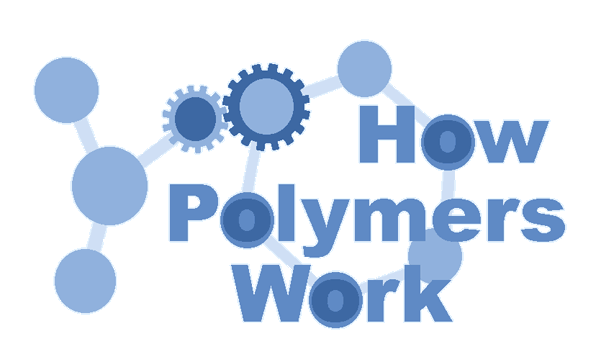
Intro to Diene Polymers
The first thing we have to get out of the way is just what a diene is. A diene is a molecule which contains two carbon-carbon double bonds. Usually when we talk of diene polymers, we're talking about polymers made from small molecules, or monomers, that have two carbon-carbon double bonds in what we call the 1 and 3 positions, that is, in the positions shown in the picture below.
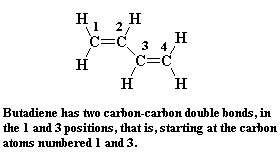
The monomer shown is butadiene, which is used to make
polybutadiene, a synthetic rubber. Diene polymers are similar to vinyl polymers, but vinyl polymers are made from monomers with only one carbon-carbon double bond which turns into two single bonds linked to the next monomer.
Because diene monomers have two carbon-carbon double bonds, they can link together in more than one way. A butadiene can
become one of three different repeat units in the polymer chain as shown in the picture below.
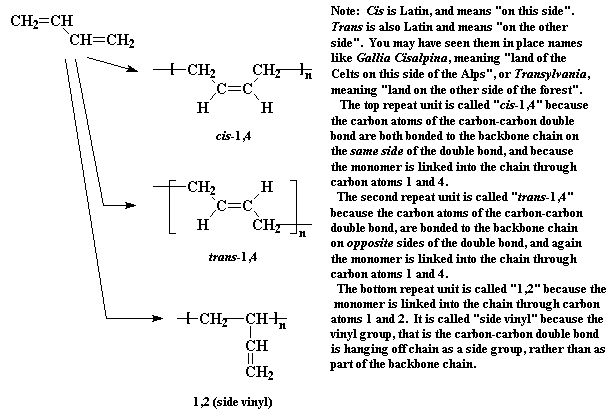
Isoprene is even more complicated, and polyisoprene can have four different repeat units:
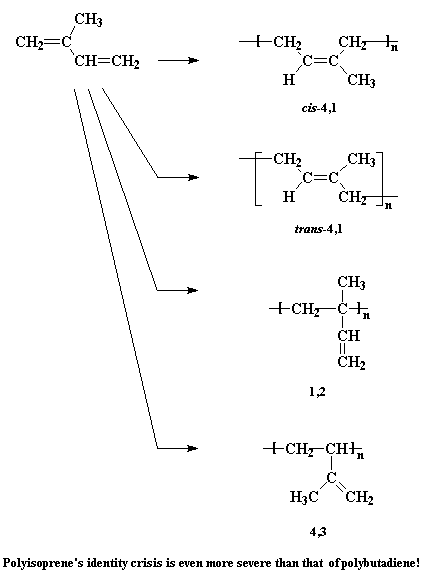
Because these diene polymers have double bonds in the backbone chains after the polymer is formed, they can be crosslinked by a process called vulcanization. This is done by heating the polymer with sulfur. The sulfur reacts with the two carbon-carbon double bonds in adjacent chains as shown in the picture below.
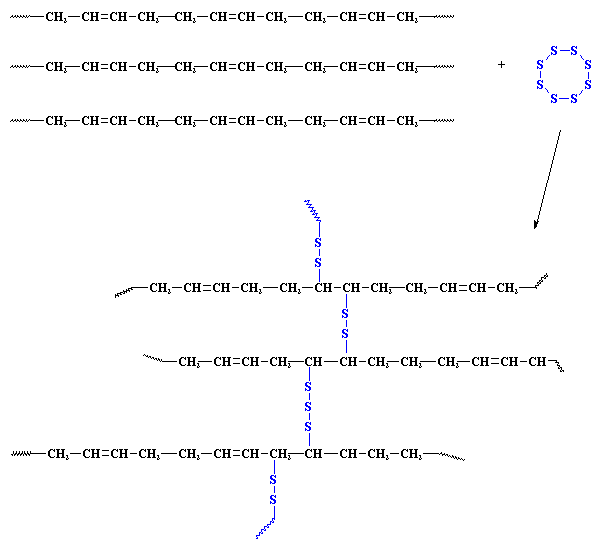
Without crosslinking, diene polymers can get gooey and runny when they get hot, and they can become brittle and break when they get too cold. When crosslinked they are solid, stretchable elastomers over a large temperature range.
So how are diene polymers made? Polyisoprene grows on trees. It is found in the sap of a tree called hevea brasiliensis. But other diene polymers like polybutadiene and polychloroprene are usually made by Ziegler-Natta polymerization.
Go read about a diene polymer today!

|
Return to Level Three Directory |

|
Return to Macrogalleria Directory |